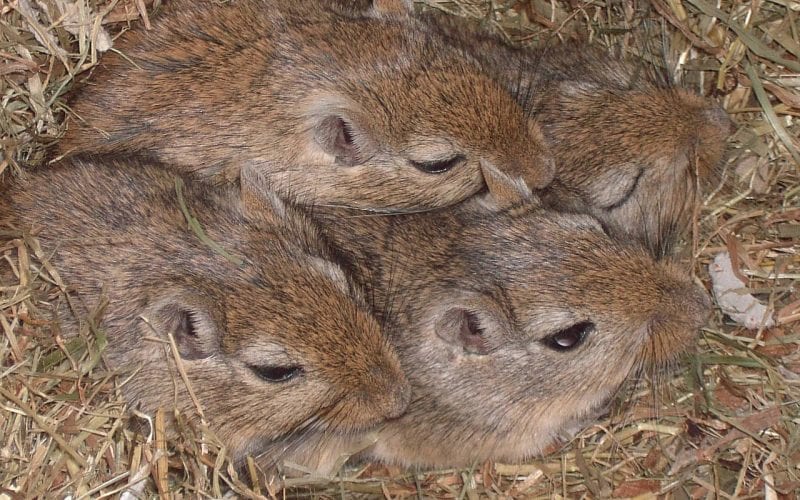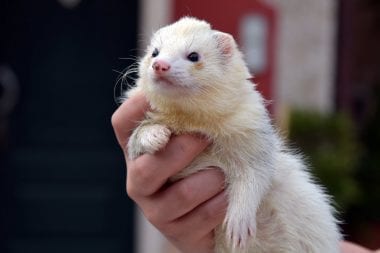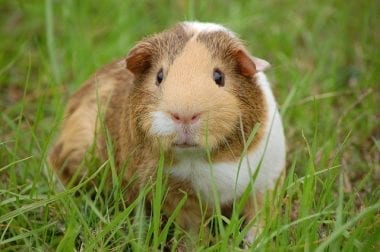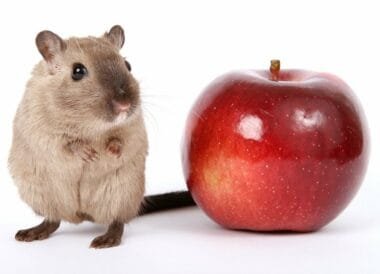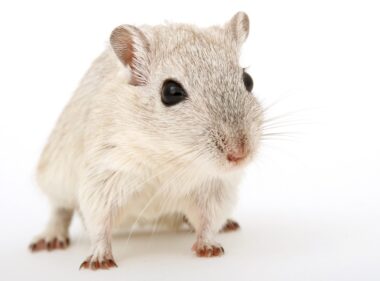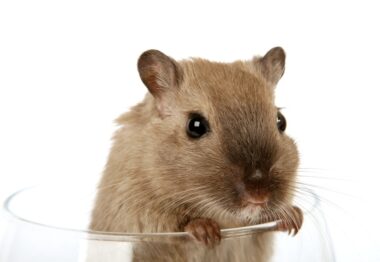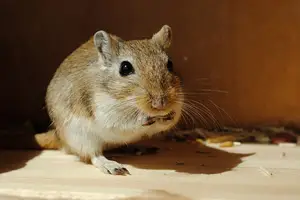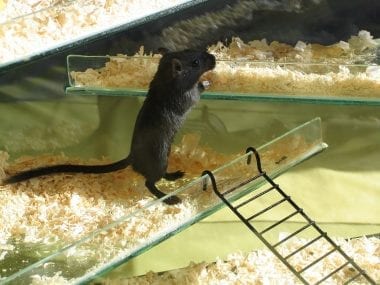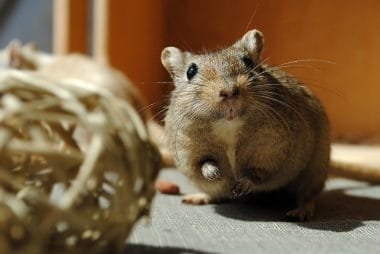A Mongolian gerbil makes a great pet for families. They are especially well-suited for children. They are playful, adorable, and good-natured. They don’t bite, are sociable, and are not smelly. All these facts make the gerbil the ideal pet. This is why many American families keep this rodent-like creature as a pet. Once you bring home a gerbil, you need to take good care of it. The article is a care sheet that tells you all you want to know about taking care of your Mongolian gerbil.
Facts about Mongolian gerbils
Before getting into taking care of the gerbil, you need to know the basic facts about the Mongolian gerbil. This will help you take better care of your pet.
- The gerbil is a very social animal. It prefers the company of another of its type. Always get a pair of gerbils. A gerbil living alone will be lonely and likely to suffer from health problems. You can get a pair of gerbils of the same sex to avoid breeding.
- The Mongolian gerbil is a fragile animal. It must be handled with care. Kids must be trained to handle it carefully and not pick up by its tail.
- Gerbils should not be allowed to mix with other pets like cats, dogs, or ferrets.
- The gerbil lives for a span of 3 to 4 years. Fat-tailed ones may live up to 8 years.
- It weighs around 40 grams and is around 8 centimeters long on average.
- While white, black, and gold-colored Mongolian gerbils are available, they are mostly of an ‘agouti’ or wild-color.
- Gerbils are chewers. They will chew everything and if you keep them in a page, they are likely to chew it too.
- Gerbils love to burrow and it is their natural behavior.
- When you have more than one gerbil, they will groom each other.
- Gerbils start breeding once they reach three months of age. They can produce four to ten babies once a month, so avoid keeping gerbils of the opposite sex together.
Housing the gerbil
When you get a Mongolian gerbil, you need to make a living space ready. Your gerbil should be kept at room temperature. Avoid keeping it outside the house or in the garage. Ideally, an aquarium tank would be the best housing for your gerbil. You can create a deep bedding layer. This will allow the gerbil to burrow into the bedding, allowing it to be comfortable. You can keep the top of the tank closed with a secure mesh lid that ensures ventilation. You should be able to get a good quality plexiglass tank for around $25.
A cage of 12 inches by 24 inches of height 12 inches is ideal for a pair of gerbils. The problem with cages is that your gerbil is going to try to chew it to escape. You need to keep a nest box for your gerbil. A wooden box is best. You can even use a clay flowerpot as the nest box. The box will be a secure space for the gerbil. The gerbil’s nature is such that it likes to have a hiding place to get away from light and any other dangers.
You need to keep things in the living space for the gerbil to play with and chew. Avoid keeping any plastic objects. Keep wooden blocks or wooden toys. You can keep branches, hay, or even cardboard boxes. A toilet paper roll is a good toy that your pet will chew apart. This will help keep it active. The chew toys you get should be non-plastic, you can get them at pet stores.
Since the Mongolian gerbil loves to burrow, the bedding needs to be in layers. You can use hay as bedding. You can also use paper napkins or aspen shavings as bedding. Let the bedding be at least three inches deep. This allows the gerbil to burrow through. It can also chew on the bedding material and use it to line its nest box. Your gerbil is likely to mess up the bedding material. You may need to replace it once a few weeks. Cellulose fiber bedding is a good option. Avoid wood shavings, as cedar and pine wood oils can be toxic for your pet.
Food and water
Your Mongolian gerbil requires a special diet. You can get gerbil concentrate Muesli as its daily food. You can get this at any pet store or online. It contains all the vitamins and minerals your pet needs. It also contains vitamin C that your gerbil cannot make on its own. Avoid keeping food in a metal bowl as the metal can affect vitamin C absorption. Keep fresh hay in the gerbil’s housing.
You can even give fresh vegetables and fruits as food. Avoid potato, lettuce, uncooked beans, chocolates, and rhubarb. You can keep a water bottle with a spout, on the cage so your gerbil can drink from it whenever it is thirsty. Ensure the water you keep is clean and free from chlorine. You can add vitamin drops to the water if advised so by the vet.
Taking care of the gerbil’s health
The gerbil is a sensitive animal and needs proper care. It is unlikely that your pet may develop health problems but you need to have a vet on standby. The Mongolian gerbil is considered an exotic pet and hence all vets may not be able to take care of it. Find a vet who can treat the gerbil’s health problems. A healthy gerbil would have a glossy coat, bright eyes, and will be lively. If you observe signs of listlessness, dull coat, runny nose, or diarrhea then it is a sign of a health problem.
The upper incisor teeth of the gerbil keep growing through its life. As a result, your gerbil will keep gnawing at things and chewing them up. Ensure that its tank or cage has sufficient wood items that it can gnaw on. Some issues to keep in mind regarding your pet’s health care include:
- You can take your gerbil to the vet for regular checkups. These checkups will ensure your pet remains in good health.
- In case your gerbil falls ill, the treatment costs can be expensive. You can consider buying an exotic pet health insurance policy.
- Tumors and growths are a concern. If you observe any growth, take your pet to the vet immediately.
- Mites can cause hair fall. This needs treatment and you need to ensure any parasitic infection is treated.

Do gerbils get along with each other?
When you introduce another gerbil into the cage/tank, you may be worried about how the other gerbil would react. Gerbils love to have one or more of their own species. The best thing to do is to buy two or three gerbils at the same time. You can buy gerbils from the same breed. Even unrelated gerbils usually get along when they are younger.
Once they become adults (more than ten weeks old), they can become aggressive. Females will especially be aggressive to another female introduced. If you plan to introduce another gerbil, make a partition in the tank using a wire mesh. Let the two gerbils stay at either side. Give them a few days to be adjusted to each other. Then they may accept each other without a fight.
Handling the gerbil
The gerbil is a friendly animal and will usually allow you to pick it up and cuddle it. Start by offering treats so they come near you and get to know your scent. Then touch them and stroke them. You can then pick them up gently. Scoop the gerbil into your hand and hold it gently. Never pick up the gerbil by its tail.
The gerbil will love to explore the world outside its cage/tank. Do it slowly and gradually. You can get a plastic ball and put your gerbil inside so it can play inside and make the ball roll. Don’t leave the gerbil alone and don’t leave it inside for more than fifteen minutes. You can even get a wheel for the gerbil to play on.
Cleaning the gerbil’s home
Taking care of the gerbil requires taking care of its home. Keep the gerbil in an enclosed box or a playing ball while you clean the tank or cage once a week. To ensure your pet gerbil is in good health, you need to clean the tank thoroughly. Scrub it with soap and warm water. Replace the bedding but make sure you retain old bedding that is clean. Use a pet-safe disinfectant to clean the tank or cage. Any toys that you have kept in the tank should also be washed and cleaned. Replace the water in the bottle daily. Clean the food dish daily by washing it. The article told you all that you wanted to know about taking care of a pet Mongolian gerbil. The information given would have helped you know how to take the best care of your gerbil.
